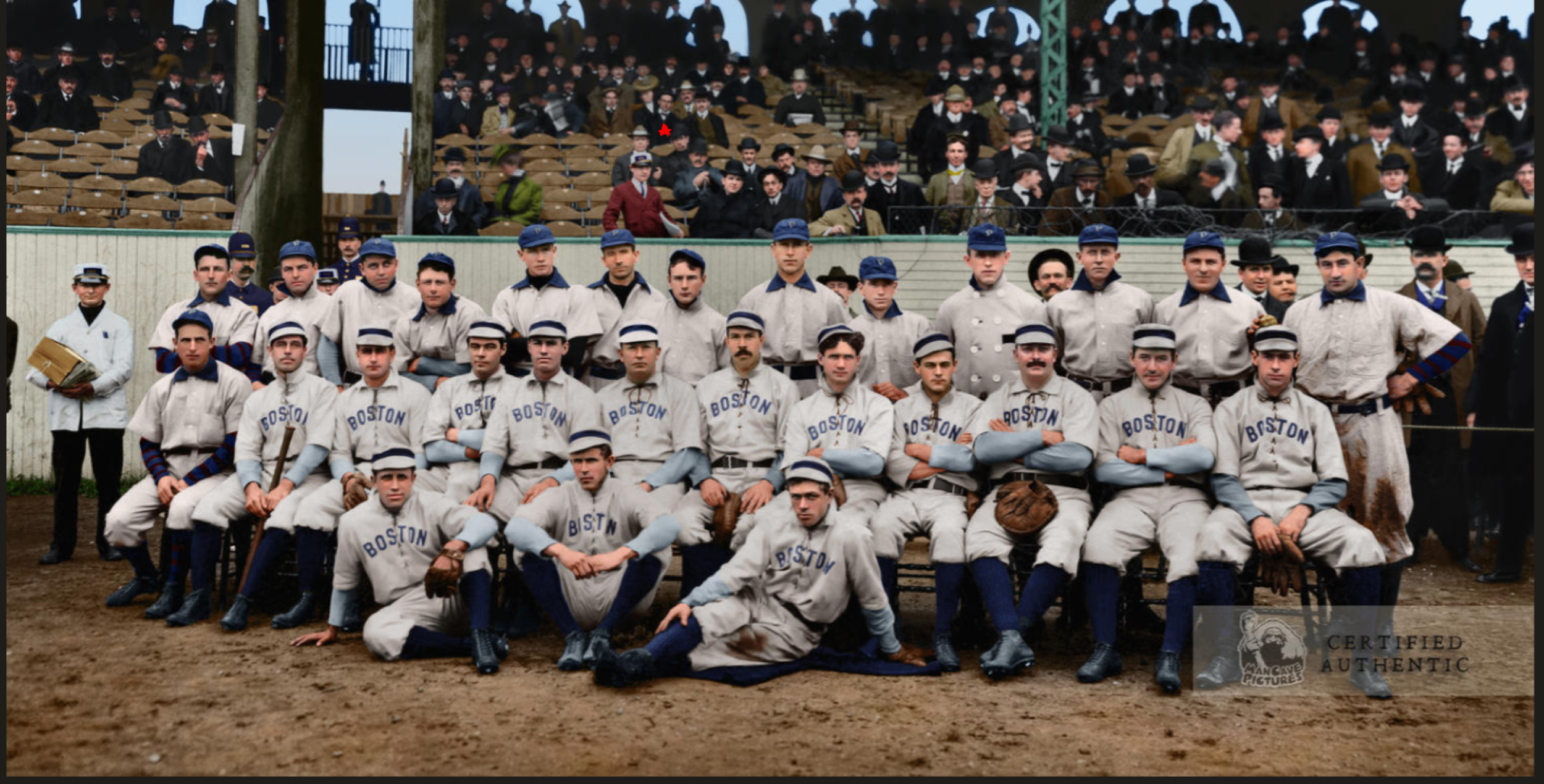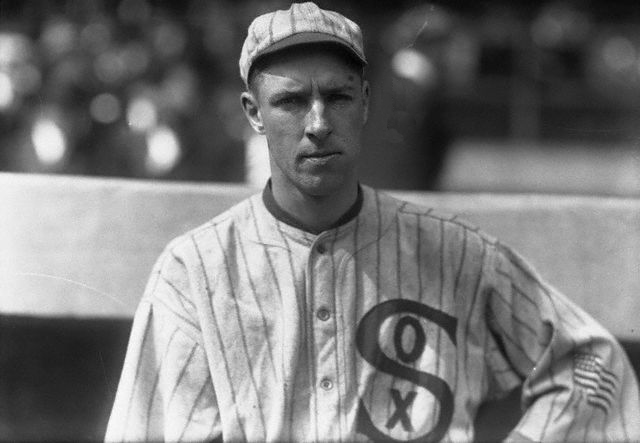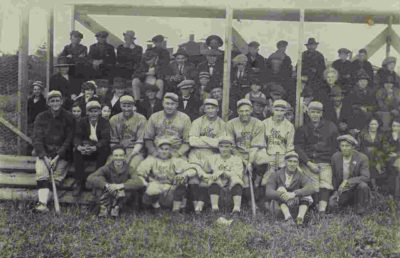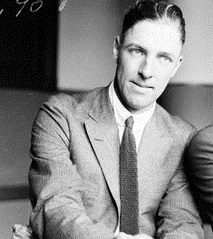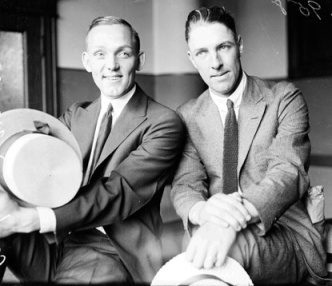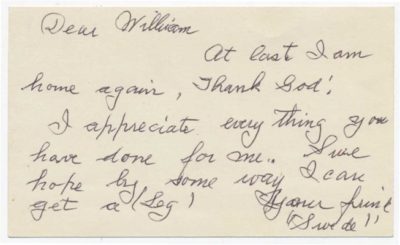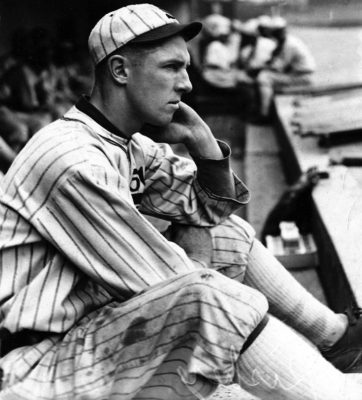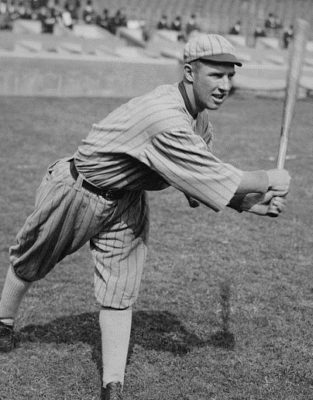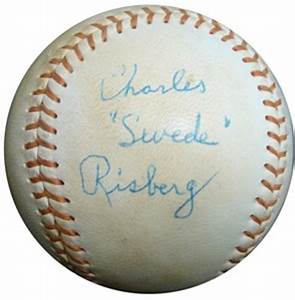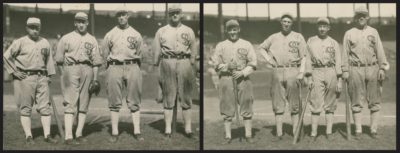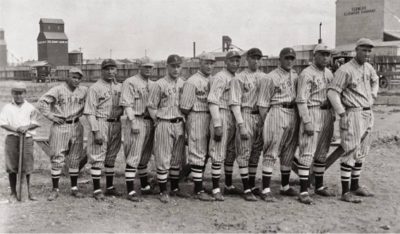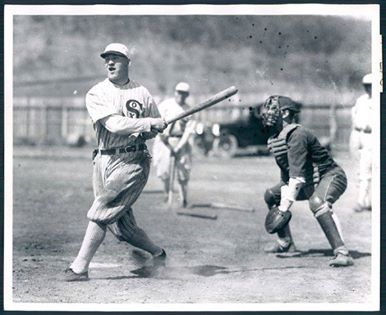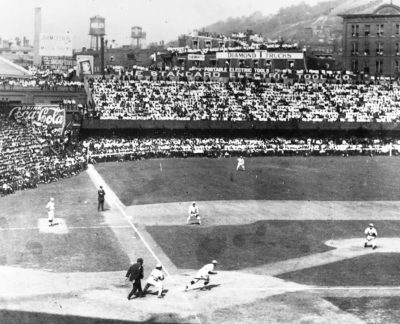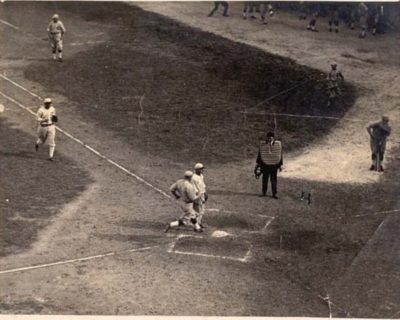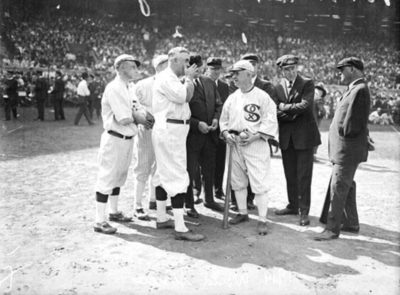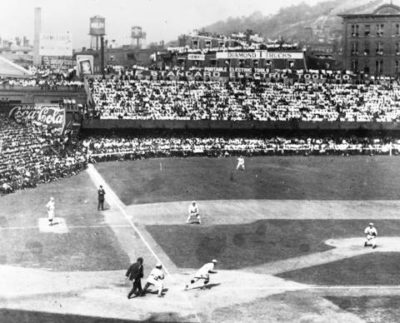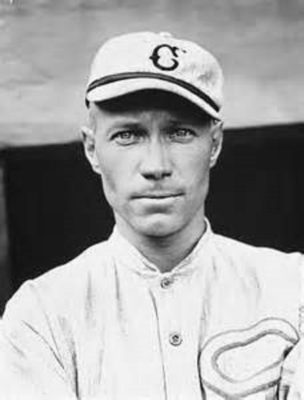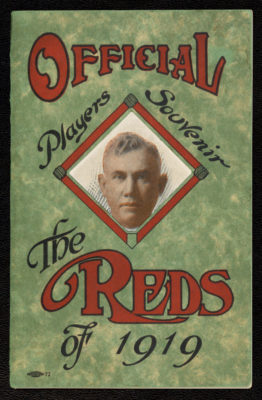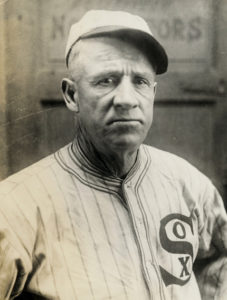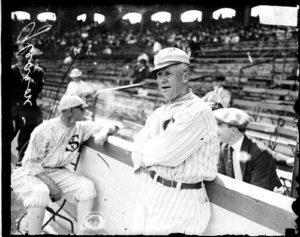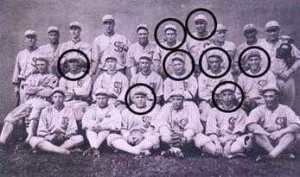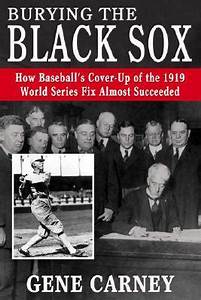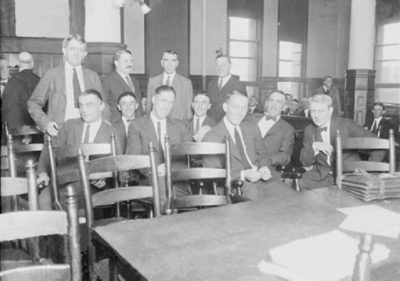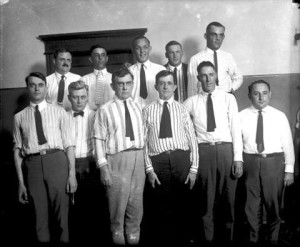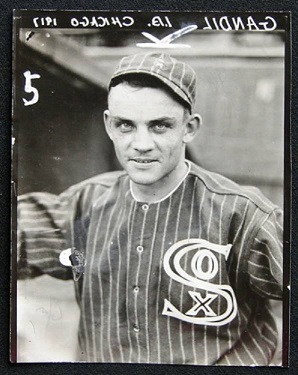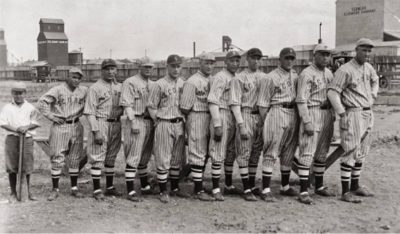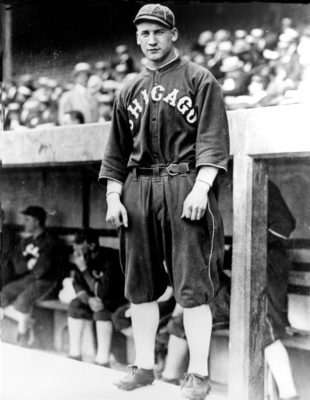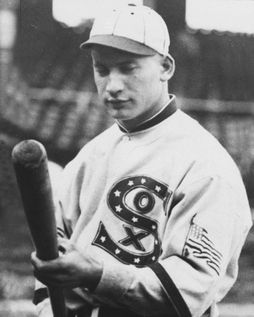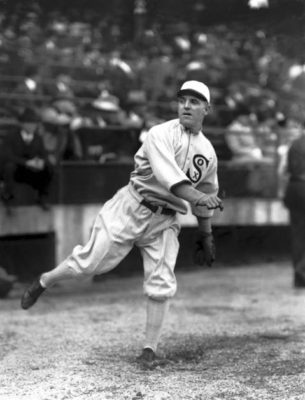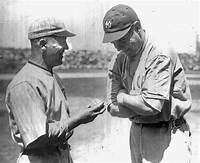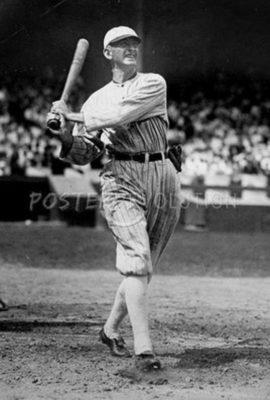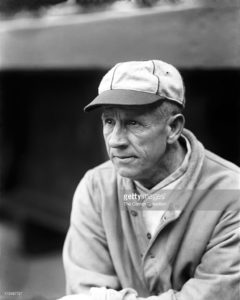Featured Photo Above:
Combined 1903 World Series Photo: Pittsburgh Pirates and Boston Pilgrims
(Color Restoration by Chris Whitehouse of Mancave Pictures)
Baseball History Comes Alive Now Ranked As a Top Five Website by Feedspot Among All Baseball History Websites and Blogs!
(Check out Feedspot's list of the Top 35 Baseball History websites and blogs)

Guest Submissions from Our Readers Always Welcome! Click for details
Subscribe to Old Baseball Photos and Essays for automatic updates (sign-up block found in right side-bar)
As a Free Bonus for subscribing, you’ll get instant access to my two Special Reports: Memorable World Series Moments and Gary’s Handy Dandy World Series Reference Guide!
Swede Risberg and the 1919 Black Sox Photo Gallery
Click on any image below to see photos in full size and to start Photo Gallery:
Spotlight On The “Eight Men Out,” Part Five: Swede Risberg
“The Swede is a hard guy.” –Shoeless Joe Jackson
Swede Risberg was a 25-year-old rising young star in the American League when he was banned for life following his participation in the Black Sox scandal. He was the youngest of the eight White Sox players banned by Judge Landis.
Swede made his major league debut with the Sox on April 11, 1917. A converted pitcher, he was a below-average hitter, but he won the starting shortstop job due to his outstanding defensive skills and his cannon of an arm. Over his career (1917-’20) all with the White Sox, he hit .243 with 175 RBIs.
Risberg missed a good chunk of the 1918 season, as did many players, working in a shipyard as part of the war effort. The job was considered essential, and served a useful purpose: Even though it consisted largely of playing baseball, it kept him out of the draft. He was back with the Sox for the pennant-winning 1919 season. He hit .256 and drew raves for his strong arm and stellar defense as the Sox cruised to a second pennant in three years.
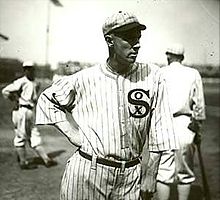
The Sox were a divided team with two distinct cliques: the first consisted of the educated players, centering around Columbia grad Eddie Collins. The other might be called, for lack of a better term,”the rowdies,” with Chick Gandil calling the shots. Unfortunately, Risberg ran with the latter group. They thought they were underpaid by cheapskate owner Charles Comiskey; and so, the story goes, they devised a plan to throw the 1919 World Series. The payoff? An enticing ten grand each…
The Swede was not a nice guy; and, like Gandil, definitely not someone you wanted to mess with. Also like Gandil, there has never been a movement to have Swede Risberg reinstated. The sentiment has always been that he got what he deserved.
He was reportedly one of the ringleaders of the nefarious plot and also filled the role of enforcer, helping to “convince” some of the others to go along with the scheme. Once in, it fell to him to keep them in line. In a court deposition, Joe Jackson said that when he didn’t receive his promised money and threatened to expose the plot, Risberg, mincing no words, actually threatened to kill him if he blabbed. Apparently, Jackson didn’t think Swede was kidding…
Here’s sportswriter Hugh Fullerton’s assessment of the Swede:
“He is liable to be a sensation one minute and a crape-hanger the next, for he can throw them away as far and as hard as anyone. The boy is high strung, nervous, and inclined to panic. … His fault is that he seems striving constantly to conceal his nervousness under a veneer of pretended toughness.”
Risberg’s play during the series against the Reds tended to severely undermine his later protestations of innocence, hitting an anemic .080 and committing four errors. He later claimed that he was bothered by a bad cold. Risberg was acquitted in the ensuing trial, but then was banned for life by Commissioner Kenesaw Mountain Landis along with his seven implicated teammates. Risberg continued to play semi-pro baseball for a decade after his banishment.
In 1926, Risberg was called to testify about a 1917 gambling scandal involving Ty Cobb and Tris Speaker. Although he presented no evidence regarding this scandal, he claimed that in 1917 he had collected money from other White Sox players to pay off the Tigers to intentionally lose games. However, his story was contradicted by many others and was disregarded.
After his outlaw baseball career ended, Swede eventually ran a tavern and lumber business in the northwest United States. During his playing days, he had once been badly spiked by an opposing player. The injury never properly healed and the leg was eventually amputated.
At the end of his life, he lived with his son and remained an avid baseball fan. He was the last surviving Black Sox player. Risberg always refused to discuss his role in the Black Sox scandal. He died in a convalescent home in Red Bluff, California in 1975 on his 81st birthday.
Gary Livacari
Photo Credits: All from public domain
Information: Excerpts edited from the Swede Risberg SABR biography by Kelly Boyer and Rod Nelson http://sabr.org/bioproj/
“Friend” me on Facebook: https://www.facebook.com/gary.livacari.9
Visit Our Web page: “Baseball History Comes Alive!” now with over 288K hits!:
http://wp.me/P7a04E-2he
Check out my two books, both now available on Amazon in e-book and paperback: “Paul Pryor in His Own Words: The Life and TImes of a 20-Year Major League Umpire”and “Memorable World Series Moments.” All profits go to the Illinois Veterans Foundation
Cast Your Vote in Our New Poll Question: How Do You Feel About Judge Landis’ Verdict Against the “Eight Men Out”? Let Your Voice Be Heard! https://wp.me/p7a04E-5IF
We are a participant in the Amazon Services LLC Associates Program, an affiliate advertising program designed to provide a means for us to earn fees by linking to Amazon.com and affiliated sites. Click here to view Amazon’s privacy policy
